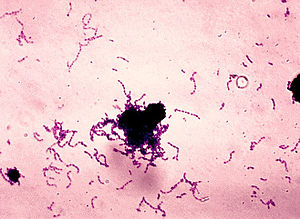I woke up this morning with a new vision of herbal medicine. (I’m not sure it really was a vision, but it came to me that way.)
God gave us the plant kingdom to feed us. I think we’re all pretty clear on that (and I’m glad he has a sweet tooth).
And to protect us. It wasn’t an accident that Jesus was a carpenter. What is the single best building material in the world? If you had to choose only one, wouldn’t it be wood?
And to heal us (and maybe more). Here’s where things get muddy.
One more thing: in some way, much of this has been corrupted.
It’s like a whole barrage of things I’ve been studying lately fell into place.
Last spring I was teaching Sunday School and we did a little thought experiment: What would remain if all were right with the world? Think about your own neighborhood – what would be gone? What would remain?
It’s easy to start with the obvious – no bars, no strip joints, no gambling storefronts. Without trouble-makers, fires, and disease we’d need no police, no firemen, no hospitals, (and no government.)
What use would there be for doctors, or clergy, or tax-supported schools? No funeral homes, no drug stores, and perhaps no butchers.
Men weren’t made to drudge through life, doing the same old thing day after day. So what would happen to coal mines, steel mills, off-shore drilling? We know where mankind went wrong – on day one, more or less. I don’t think we can even imagine where we would be if the world were filled with good.
Surely we wouldn’t need dentists – reason enough to rejoice, as I sit here with another thousand bucks of hardware in my mouth.
No tobacco shops, no tanning beds, no banks, maybe no football. And no divorce courts or child abuse.
No churches, even. Who would need them if God lived among us?
So what’s left? In my neighborhood the only thing my Sunday school class left standing was the ice cream shop.
Well, things aren’t right with the world, and some would say that’s just the way it is. Evolutionists would think so. But maybe that’s not the way things are. Perhaps there are unseen powers battling it out over good and evil.
I was reading a book entitled In Six Days: Why 50 Scientists Choose to Believe in Creation. For one scientist, his belief was based on the apparent design seen within ecosystems, and how every component has a role and a purpose. Remove enough elements – sometimes only one – and the ecosystem collapses.
Does this mean that every plant has a purpose, or is it simply there, a stray seed blown by the wind, landing where it may? I think most of us see the world this way. Perhaps we’re wrong.
And then there’s C. S. Lewis, who said God has not given us desires that have no possibility of fulfillment. Perhaps God has allowed no disease (other than death) without the possibility of a cure.
Remember when God looked at his creation and said it was good? Is poison ivy good? Not around me! But perhaps it is good for something as yet unrecognized. Or perhaps the dermatitis it causes is due to corruption either within the plant or within our immune system.
Herbalists swear by the curative powers of jewel weed for poison ivy, though medical studies have not concurred. But just because research does not confirm the benefit of a particular folk medicine does not mean it doesn’t work. Perhaps the methodology was flawed, or the timing was off, or maybe the wrong part of the plant was used.
It’s a difficult job to sort out the snake oil from the truly effective. Double-blind placebo-controlled studies are best at doing so, but are expensive, time-consuming, and unlikely to make it into the literature unless every “i” is dotted and every “t” is crossed. And in the medical world, if it’s not in a respected journal, few will listen.
As for medical prepping, it makes far more sense to learn how to use the plants that grow in your backyard than to stockpile herbs from China.
It also seems unlikely that God would wait until the 20th century to give us answers to disease, and unlikelier yet that he would reserve that power for big pharma.
Yet the scientific method is sorely needed in the realm of naturalistic healing. The National Center for Complementary and Alternative Medicine (NCCAM) is trying to make sense of it all.
What does this all mean for me, or you? I’m looking at those dandelions in my yard differently now. I know I could eat them (if I had to). I know the flowers can be made into wine. But according to NCCAM, “There is no compelling scientific evidence for using dandelion as a treatment for any medical condition.”
Well, maybe they’re wrong. And maybe I’ll have to help prove it.
Copyright © 2011 Cynthia J. Koelker, MD
- Herbal Medicine Debate (armageddonmedicine.net)
















